Four days after an extraordinary General Election which produced a surprise, if tiny, Conservative majority, normality is being restored remarkably quickly in the household of 2 political journalists where I still find myself. All expectation of inter-party negotiation behind closed doors has come to nothing and this sudden rush of single party government has produced a brief interlude of exhalation … and consequent realisation of exhaustion which often follows in rapid succession – and that’s just me! Thank you Britain for being so decisive. One small boy will now be taken to London Zoo today by his parents who will give him lots of attention (though undoubtedly still attached to their mobile phones).
The fabric shown above was one of the Bloomsbury range produced by Laura Ashley in the late 1980s, although this particular design never appeared in the catalogues (and I have consulted all my early Laura Ashley catalogues from this time). Why it never appeared in ordinary stock I don’t know but in about 1988, I came upon a few bolts of the fabric in the shop with a sale price of £1.99 per metre – surprisingly cheap even then when LA cotton was on average about £8 per metre. Without hesitation I immediately bought about 40 m which I made into generously full bedroom curtains for my then London home. Cut down from what was needed for the 9 foot plus Victorian ceilings, they now work just as well in the vicarage. Not usually keen on patterned curtains which I find date quickly, I loved them … and love them still.
The original fabric of 1932 was designed by Duncan Grant for Alan Walton Textiles and was screen printed on either satin or cotton & rayon. Having a thoroughly late C20th sensibility I love natural fabrics and shudder at the thought of the now much reviled but then new and experimental rayon, nylon, etc. It’s also noticeable that Laura Ashley had subtly fine-tuned the colours for the current version – for an original colour way see V&A blog here. What is not in doubt, however, is that the design was highly regarded at the time for it won the Medal of Merit at the Paris International Exhibition of 1937.
The Bloomsbury Group were particularly fond of Greek Myths and the Apollo and Daphne story appears often in both their art and writings. The main source is Ovid’s Metamorphoses. In this telling of the story, Apollo has scorned Eros for his unseemly use of his bow and arrow and, infuriated, Eros sets about revenge, shooting the innocent nymph Daphne with a leaden arrow to arouse hatred and piercing Apollo through the heart with a golden arrow to induce the deepest love.
Daphne is a seriously bad choice as an inamorata for she has already turned away many potential lovers and begged her father, Peneus (a river god) to allow her to remain unmarried. She prefers outdoor pursuits and loves nothing as much as wandering through her wooded homeland revelling in the wonders of the natural world. Now Daphne’s sylvan idyll is seriously under threat from the love sick Apollo who continually pursues her through the woods, dogging her footsteps but never quite catching up with so fleet-footed a nymph. Impatient Eros, viewing his bagatelle from above, interferes to effect Daphne’s capture. In utter desperation, she calls to her father to help free her, begging for drastic intervention – being swallowed up by the earth or a change of form, anything to avoid being taken by Apollo.
Moved, Peneus initiates her transformation. Her feet falter, slow down and become rooted in the earth. Apollo, within reach of the still visibly human form, embraces the object of his desire but he finds his hands devoid of the expected voluptuous flesh and full instead of delicate leafy branches. Apollo, still awash with uncontrollable love and desire, but now with a beloved tree and not a nymph, vows to tend the tree forever and he grants it special significance. From now on Daphne will be a tree symbolising victory and immortality, her everlastingly green leaves rewarding triumph and success. The twist in the tale is of course that in both Apollo’s and Daphne’s case their own successes are not without the bitter tang of defeat.
The Apollo and Daphne story had 2 powerful echoes in society of the 1930s. Women had only received full suffrage in the Representation of the People’s Act of 1928 and they were beginning to push for a more equal footing in other areas. There was also a growing appreciation of the natural environment after the carnage of WW1 and the economic hardships of the 1920s. The Bloomsbury Group loved myths, fables and fantasies and indeed they could be said to live an idyllic rural fantasy – a fabulous bubble which was not always what it seemed. (Yes to increasing women’s independence, yes to pacifism but yes too to servants* – where would they have been without Grace Higgens? – and yes please too to unearned income to pay the rent.)
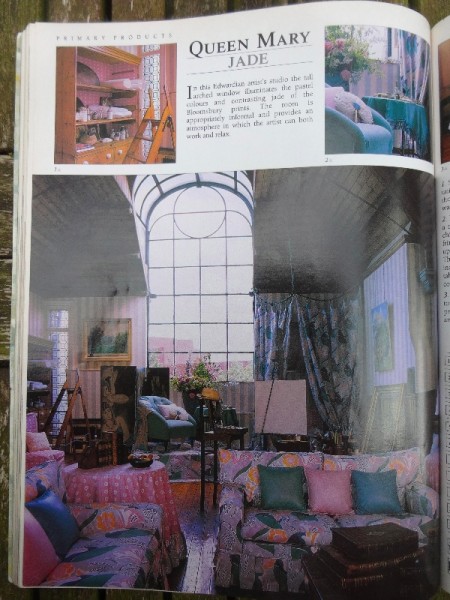
Laura Ashley Catalogue of 1987 featuring Bloombury fabrics. (Picture shows Studio on the Talgarth Road, London)
*For more about the Bloomsbury servants, read Alison Light’s Mrs Woolf and the Servants which will make you feel much better about yourself and your inability to find time for Bloomsbury style creativity as you plan family meals, load the washing machine and sigh at the pile of ironing.)
Two Bloomsbury short stories have elements of the Apollo and Daphne myth. E.M.Forster: The Other Kingdom and David Garnett: Lady into Fox. In both stories the nature-loving heroine escapes her male tormenter as well as the disturbing aspects of modern society by returning fully to nature as a tree in the first story and as a vixen in the second. I think there may also be whiffs of similar metamorphoses later in the century in the novels of Iris Murdoch but I’m still thinking about this. Meanwhile I look at my curtains and just enjoy the design and colour and give very little thought to anything of deeper significance – oh dear superficial once again.

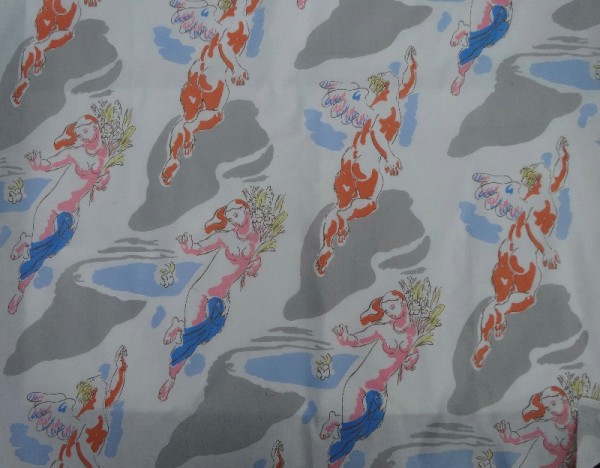
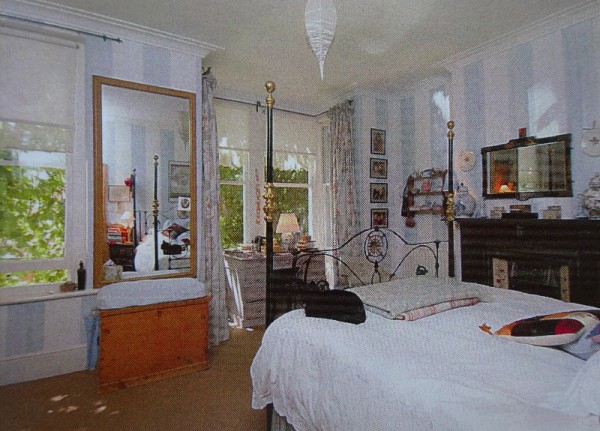
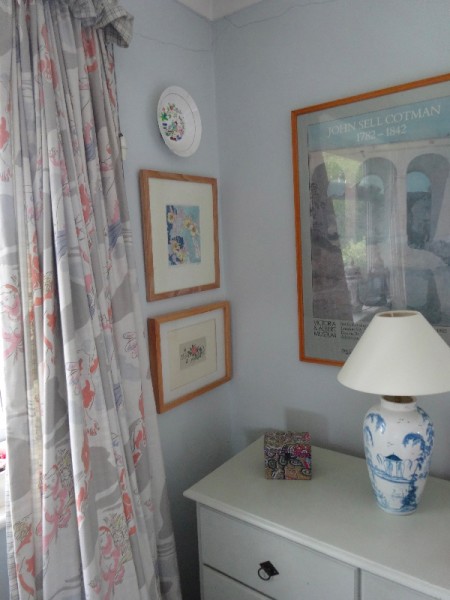
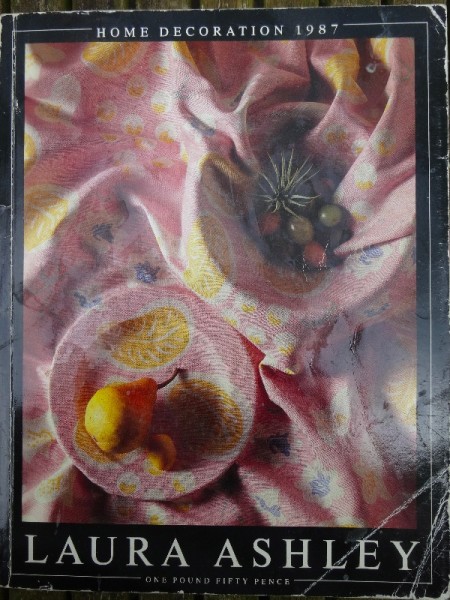
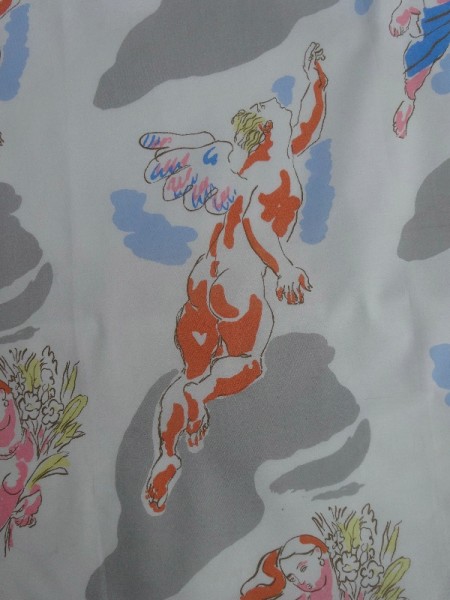
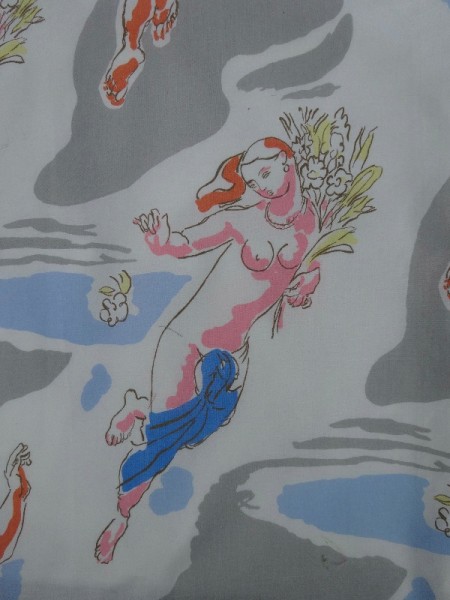
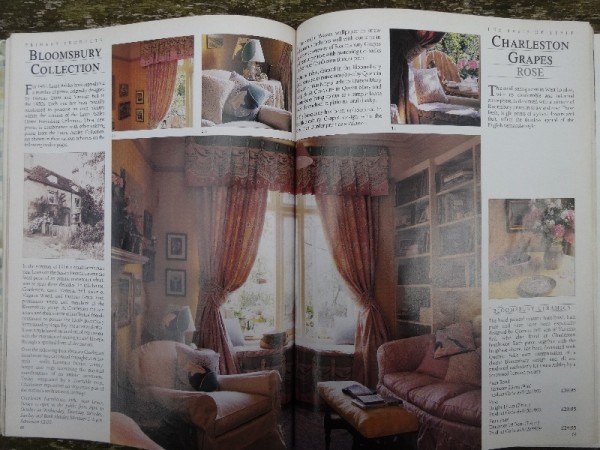
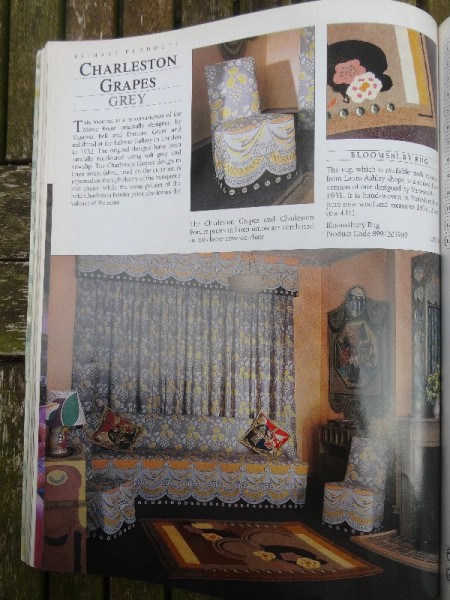
23 Comments
A really good print doesn’t date – my parents have a set of living room curtains they bought nearly fifty years ago. They’ve been in three houses, never been down – except to be remodelled for a new rail – and we all love them still. They don’t look fifty years old!
Umm, Im not sure about that but there if you love a design dating doesn’t really matter.
What a brilliant bargain! A beautiful print, it rather reminds me of Persephone Books – they use a lot of early 20c printed fabrics as their endpapers. I have kept a pair of gorgeous print curtains that I used in the boys’ playroom when they were small, I am terribly fond of them, and have hopes one day of rehanging them, somewhere. We grow so attached to soft furnishings, or at least I do! X
Yes, Penny, Persephone have used several Bloomsbury fabric prints as endpapers – and they look great with those lovely grey book covers.
If you never find the right place to hang your much loved curtains, perhaps you could make a quilt with big patches of the fabric (or one central big piece and then borders, alternating the fabric and white) which you can then hang on a wall somewhere and enjoy in a completely different way. But then again, you might regard cutting them up as barbarian!
Thank you Mary, an inspired suggestion! I don’t know how to quilt but am attending a course later this year to start learning, so I will keep your suggestion in mind for a time when I become competent! X
I’m sure you’ll pick quilt making up vey quickly – new methods are very labour- and time-saving and, with simple blocks, quilts can be made up to the quilting stage in a weekend (assuming there are no family members to be fed, watered and relocated!!) You can then either get it commercially quilted or set it aside to hand quilt as a winter evening activity. I have always had quilts around – on beds, as curtains, hanging on walls, or folded over bannisters where they and their fabrics can stimulate memories and be a constant source of pleasure. You may become addicted!
I loved the Bloomsbury fabrics in Laura Ashley – sadly, never to be mine, but how wonderful that you bought them and made such fabulous curtains. Something so free and airy about their designs – one day perhaps I may have the enormous delight of visiting Charleston… I have dreamt about it for years… I have read so many books about Bloomsbury life all sitting on my shelf. I even, amazingly, painted an old jarrah bookshelf in a Charleston inspired circus design. It sits by my bed now.
I am pleased you now have a little more time after the frantic Election days – and a swift decision too. Normality has been restored.
Do make Charleston a priority when you next come to the UK. A friend and I used to go about once a year for a few years – always in June, so I have memories of it being perpetually summer there and utterly uplifting (delicious home made cakes too).
Mary, I was so pleased to find your piece about the Apollo and Daphne fabric. I have been in love with this print since I was 15, when I worked for Laura Ashley asa Saturday girl. My neighbours at the time were very stylish architects ad designers: following their request, I was able to find them a large quantity of discontinued fabric in this print. I wish I had done so for myself, but it seemed silly aged only 15…
If you ever decide for any reason that these curtains are no longer required, please let me know. I would bite your hand off for them.
Kind regards,
Sophie Wilson
That’s fascinating. I sometimes wonder whether I dreamed up the idea this fabric was £1.99 per metre – but then I wouldn’t have bought 40m otherwise.
Interesting to hear your memory. I do have some fabric left unused and when I have the chance I’ll root it out – maybe a couple of metres, I’m not sure, so I don’t want to get you too excited.
Are you the Sophie that worked with David at Cheltenham?
Hello Mary, thank you for your reply, which I have just found online.
I am not the Sophie who worked with David, no!
I would be so excited of you could root out any unused fabric in this print.
Goodness, what a prospect! Thank you.
Kind regards,
Sophie
I will see what I can do Sophie as I sort through my fabrics – which occupy various boxes and chest around the house.
Hello Mary, I hope you are well. I wonder if you ever rediscovered the Daphne and Apollo fabric you mentioned? I would still absolutely love to get my hands on a large quantity of this print. – or indeed any amount!
Hoping to hear from you, kind regards, Sophie Wilson
I have found some Sophie. Will see how much I can find and get back to you soon.
Hi just letting you know ive just posted some apollo and daphne fabric on ebay today
https://www.ebay.co.uk/itm/266189904728?mkcid=16&mkevt=1&mkrid=711-127632-2357-0&ssspo=cjd1ZOA1SvO&sssrc=2349624&ssuid=cjd1ZOA1SvO&var=&widget_ver=artemis&media=COPY
Hello Mary! Wonderful news! I look forward to hearing from you. Wow, this is really exciting.
Kind regards,
Sophie
Dear Mary, I hope you are well. I still dream about your curtains. I have yet to find a source for this wonderful print…
Kind regards,
Sophie
Sophie, I think I can find a bit of fabric for you, but I don’t have time to root it out until the beginning of March. I’m also not sure what size of piece or pieces I have. Did you have an amount in mind>
Dear Mary, I do hope you are well. I would love any quantity of the Daphne and Apollo fabric. It is like gold dust. Thank you! Sxx
Thanks, Sophie, I’ve cut out your email address as it appears in the blog’s backroom.
I’ll email you now.
Dear Mary, by chance I came across this thread again. I hope you are well.
Whether your email was lost in the ether, I’m not sure, but I would love to hear from you if you still have any Daphne and Apollo fabric.
Best wishes, Sophie
Hi Mary –
I was wondering if you have any West Wind by Laura Ashley? I am looking to make a valance out of it. I have one I made 32 years ago. It is now yellowed and does not come clean. This curtain has been up in my house ever since. I have been searching the internet in hopes of finding it.
Please let me know if you can help me.
Thank you, helen
Helen, Sorry I have no West Wind fabric but the Charleston Farmhouse shop seems to sell it https://shop.charleston.org.uk/product/west-wind-fabric/.
Hope this is what you want.